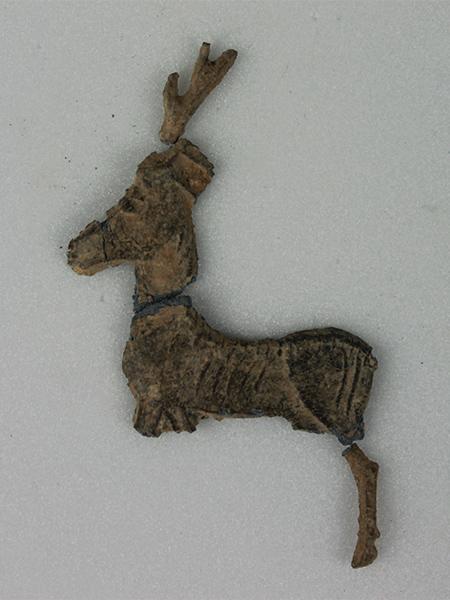
Who was Artemis-Orthia?

When most people think of ancient Greece, the Classical city of Athens usually springs to mind. Yet, Sparta in the Peloponnese, is known as the military state and is the total antithesis of the city of Athens. This is where you would find the prolific Sanctuary of Artemis Orthia, one of the most important religious sites in the ancient city and the centre of religious rituals that we still know very little about.
The World Museum has 83 lead votive offering figurines from the sanctuary in its collection. Other findings at the sanctuary - excavated by the British School at Athens in 1906 - included figurines made of terracotta and ivory, along with masks. The sheer number of offerings found at the site demonstrates the importance of the sanctuary.

The lead figurines start to be offered around the 8th century B.C. The figurines at this time were well made, fairly thick and were cast in shapes that imitated expensive jewellery offerings, including earrings. In the following century (700-635BC) there was a boom in the different types of figurines being offered, including animals, both real and mythical, as well as representations of the goddess.
It's at this time we see evidence of the goddess being addressed as ‘Orthia’ on pottery and tiles. Orthia is the Greek word for ‘standing’, but it also could have been the name given to the Spartan winged animal goddess of women and fertility.

Two main fragments of a decorative plaque from a votive offering associated with the Sanctuary of Artemis Orthia.
In later periods there is evidence of her being referred to as ‘Artemis-Orthia’. There's a possibility that Orthia was merged with the Greek goddess 'Artemis', who has similar qualities being a mistress of the animals. However in Ancient Greek art representations, Artemis is often depicted as a maiden huntress in a skirt carrying a spear. In around 635-600 BC winged goddesses were popular, as well as women wearing skirts, suggesting that both interpretations of the goddess were used by different individuals at the same time.
Figurines dating to 600-500 BC suggest an ideological shift to the Greek style Artemis, rather than Orthia. In this period deer - Artemis’ most sacred animal - are introduced, and other animals decrease in number. Other gods, including Poseidon (Artemis’ uncle) and Hermes (Artemis’ half brother) also start being used along with warriors. This is also the peak time for the number of figurines found. The shift in figurines offered coincides with the building of a second temple around 570BC and an expansion of the old temple.

The figurines gradually become poorer quality, and many of them have not survived. Around the 3rd century AD the Romans had taken over the region and built a theatre around the temple, welcoming tourists to watch ritual displays. It is probable that the figurines became more crude as the offerings became a novelty for tourists.
